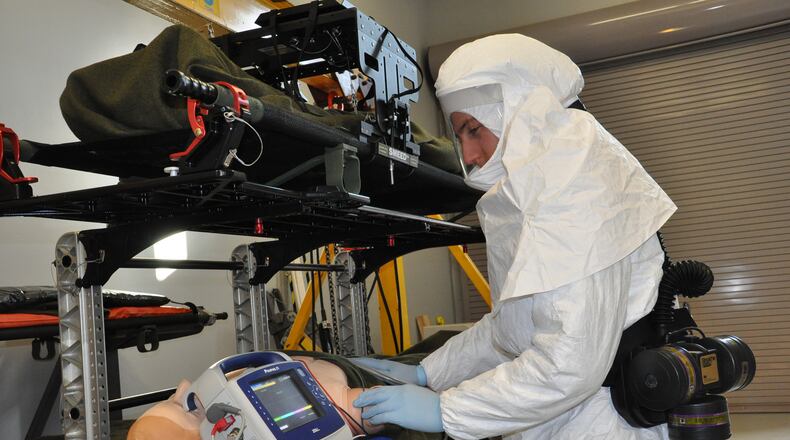“Health emergencies can quickly disrupt, derail and divert resources from other ongoing priorities and efforts from across the government,” said Rich Hamburg, interim president and CEO of TFAH. “Many areas of progress that were made after 9/11 and the anthrax attacks to improve health security have been undercut. We aren’t adequately maintaining a strong and steady defense, leaving us unnecessarily vulnerable when new threats arise.”
The major indicators that states were judged on included: public health funding, public health accreditation, flu vaccination rate, climate change readiness, food safety, reducing healthcare-associated infections, public health laboratories, and access to emergency healthcare.
Though Ohio landed among the 26 states that scored just six out of 10 for readiness indicators, officials say the state is prepared for disaster and disease. Alaska and Idaho scored the lowest, while Massachusetts ranked the most prepared state for disease and disaster.
“Ohio has a robust system in place for leading, coordinating and supporting the state and local response to emergencies, and we are pleased the report recognizes Ohio as one of only 10 states that has programs in place to get private sector healthcare support into restricted areas during a disaster,” said Melanie Amato, public information officer for the Ohio Department of Health.
The report also found:
• Only 10 states have a formal access program or a program in progress for getting private sector healthcare staff and supplies into restricted areas during a disaster, and Ohio is one of them.
• Approximately 10 states vaccinated at least half of their population against the season flu during last flu season. According to Public Health - Dayton & Montgomery County, all people should be vaccinated older than 6 months of age. During the last flu season, 3,556 Ohioans were hospitalized after contracting the flu.
• One-third of funds for health security have been cut in the U.S. Health emergency preparedness funding for states has been cut from $940 million in fiscal year 2002 to $660 million in 2016. Healthcare system preparedness funding for states has been cut by more than half since 2005 – down to $255 million. The report found Ohio increased or maintained its funding for public health from 2014 to this year.
The report didn’t measure down to particular counties in each state, but local officials told this newspaper they’re prepared for when disaster strikes.
Larry Cleek, emergency preparedness coordinator for Montgomery County, said the West Central Ohio region plans for disaster and emergency situations together — coordinating efforts with organizations like the police department, fire department, hospitals and local emergency crews.
Partners in the West Central region come together annually to run joint exercise drills and evaluate working plans and policies. Some exercises have included drills for tornadoes, anthrax attacks, terrorist-related events, Ebola and radiation issues.
In Clark County, the health department also partners with other community organizations like the local hospitals to address disease mitigation and emergencies. Christina Conover, emergency preparedness and accreditation coordinator for the Clark County Combined Health District, said every threat requires a coordinated effort from on local and state levels.
The county is working on a special pathogens plan, which would address issues like an Ebola outbreak. Recently, Conover said there’s recently been planning for what will happen during an active shooter event or an outbreak of Zika.
“It’s about being more intentional in planning, with the result of being more prepared to respond in emergencies,” she said. “It’s definitely going to bolster response.”
About the Author
